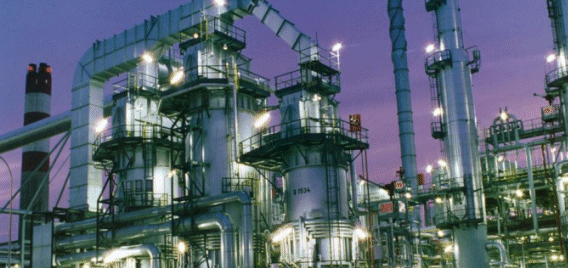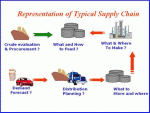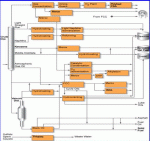Chemical and Process Engineering Resources

Modern optimization techniques have challenged organizations to rethink the way they conduct business both internally and externally, i.e. how efficiently and effectively their entire supply chain is managed. Supply Chain Management (SCM) is one such business function that has benefited substantially from optimization software advances and solutions. The primary goal of SCM is to maximize profit by integrated management of material and transactional flows within a business and to customer and partner companies.
The petroleum refining industry has effectively embraced the software solutions to optimize the business supply chain to maximize the profit margins and create order in the chaos of numerous opportunities and challenges. The supply chain of a typical petroleum refining company involves a wide spectrum of activities, starting from crude purchase and crude transportation to refineries, refining operations, product transportation and finally delivering the product to the end user. The nature of the value chain is such that its economics are extremely complex and heavily linked (Refer to Figure 1). For example, the process of selecting the right crude is linked not only to the transportation costs involved in delivering it to the refinery, but it must take into consideration the refinery configuration, capabilities and constraints in converting the crude into products, as well as the product volume and price fluctuations.
Software solutions based on Linear Programming (LP) technique have emerged as leaders among various mathematical optimization techniques available to optimize the entire supply chain from crude evaluation and selection, production planning and product logistic planning.
The objective of this article is to create an appreciation among readers about the application of Linear Programming (LP) in refinery planning and optimization as a key component of the business supply chain.
The article includes:
- Petroleum Refinery: Complexity of operations and the need and scope of optimization
- Implementation of Linear Programming for refinery planning and optimization
- Experiences in implementation and usage of Linear Programming
- The bottom line
 |
Figure 1: Typical Refining |
Refinery planning and optimization is mainly addressed through successive linear programming software like RPMS (Honeywell Hi-Spec Solutions), PIMS (Aspen Technology), and GRTMPS (Haverly Systems), while more rigorous non-linear planning models for refinery planning have been recently developed. The experiences discussed in this article pertain to RPMS, as the authors have been involved in the development and application of refinery LP models using RPMS (Refinery and Petrochemical Modeling System). RPMS was developed more than 35 years ago by Bonner & Moore, which was acquired by Honeywell Hi-Spec Solutions in 1999. RPMS is used today at more than 100 refineries and petrochemical plants worldwide for operations planning, crude oil evaluation and selection, inventory management, future investment analysis and to analyze “what if†scenarios.
Â
Complexities of the Refining Operation
Crude Selection
Modern petroleum refineries are designed to process a variety of indigenous and imported crudes. As the crude cost is about 90% of the refinery input cost, the selection of optimum crude mix is extremely important to achieve higher margins. However, the number of options for buying the crudes under a fluctuating price scenario and transporting them to refineries are so enormous that it is very difficult to evaluate all the crudes and decide on the optimum crude mix for the refinery. Refineries buy crudes both on term contracts with leading suppliers and also by spot purchases from the market. The optimum selection of term and spot crudes is extremely difficult when multiple refineries are involved and work in an integrated scenario.
Crude Transportation and Process
Once the crudes are selected and purchased, the focus is to optimize the transportation cost from the crude suppliers to refineries. The transportation cost can be minimized by considering the multiple options available for cargo sizes, sea routes, loading and unloading infrastructure facilities, taxes and duties, etc.
 |
| Figure 2: Simplified Flow Diagram for a Modern Refinery (Courtesy UOP) |
The crudes often land at refinery sites as a mix of various crudes and various options of crude blending are evaluated before it is processed. The ultimate challenge a refinery faces is processing the crudes in the best possible manner and maximize the $/bbl (dollars per barrel) for the crude input. Determining the “best possible†option is a very difficult task, as modern day refineries are built with complex processing schemes, having a combination of various technologies for heavy ends upgrading, product quality improvement, efficient fuel usage and controlling refinery emissions. The most common configuration includes catalytic cracking, hydro cracking and thermal cracking to maximize the bottom of the barrel. The other process technologies like catalytic reforming, hydro treating and sulfur recovery are a must to comply with stringent environment and product quality regulations (Refer to Figure 2 for a process flow diagram of a modern refinery).
The product demands, quality and prices drive the entire crude processing and secondary unit operations. Multiple streams with multiple blending options to make different grades of a product further make the task of refinery planning cumbersome and demanding.
Moreover, the future promises to add even more complexity through additional product specifications, environmental norms, changing feedstock, product prices, mergers and acquisitions.

 FB
FB


1 Comments